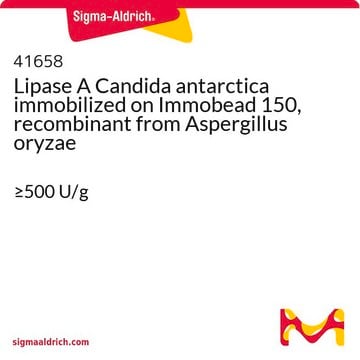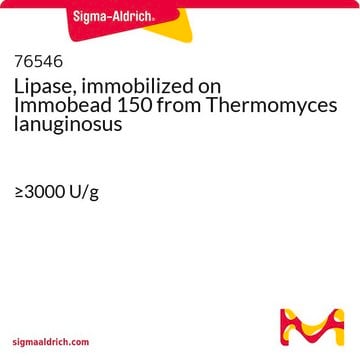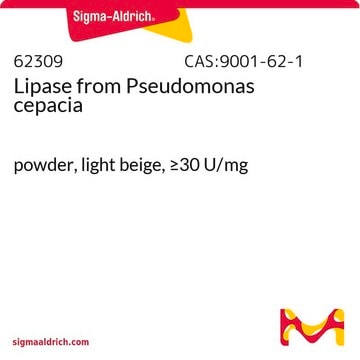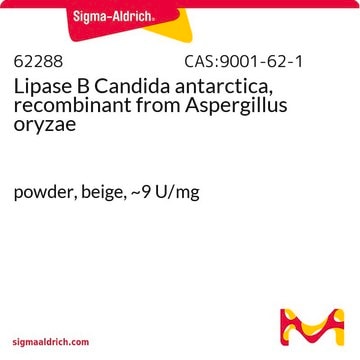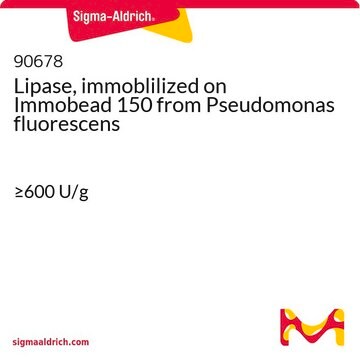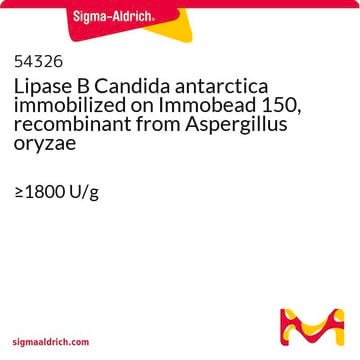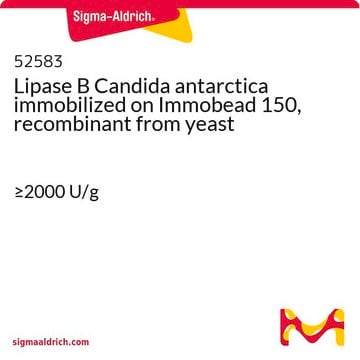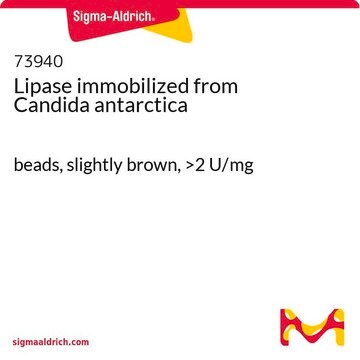54327
Lipase, immobilized on Immobead 150 from Pseudomonas cepacia
≥900 U/g
Synonym(s):
Immobilized Lipase
About This Item
Recommended Products
biological source
bacterial (Pseudomonas cepacia)
form
powder (or beads)
specific activity
≥900 U/g
color
white to off-white
application(s)
life science and biopharma
storage temp.
2-8°C
Gene Information
Burkholderia spp. ... BURCE16_RS29975(56665765)
Related Categories
General description
Lipases are water-soluble, ester hydrolases. Long aliphatic chain acyl esters of cholesterol (cholesteryl esters), triacyl esters of glycerol (triacylglycerols), acyl esters of long chain alcohols (wax esters), diacyl esters of glycerol (diacylglycerols), and monoacyl esters of glycerol, are some of the common substrates for lipases.
Application
Biochem/physiol Actions
Unit Definition
Storage Class Code
11 - Combustible Solids
WGK
WGK 3
Flash Point(F)
Not applicable
Flash Point(C)
Not applicable
Personal Protective Equipment
Regulatory Listings
Regulatory Listings are mainly provided for chemical products. Only limited information can be provided here for non-chemical products. No entry means none of the components are listed. It is the user’s obligation to ensure the safe and legal use of the product.
JAN Code
54327-50G:
54327-VAR:
54327-BULK:
54327-10G:
Certificates of Analysis (COA)
Search for Certificates of Analysis (COA) by entering the products Lot/Batch Number. Lot and Batch Numbers can be found on a product’s label following the words ‘Lot’ or ‘Batch’.
Already Own This Product?
Find documentation for the products that you have recently purchased in the Document Library.
Customers Also Viewed
Our team of scientists has experience in all areas of research including Life Science, Material Science, Chemical Synthesis, Chromatography, Analytical and many others.
Contact Technical Service